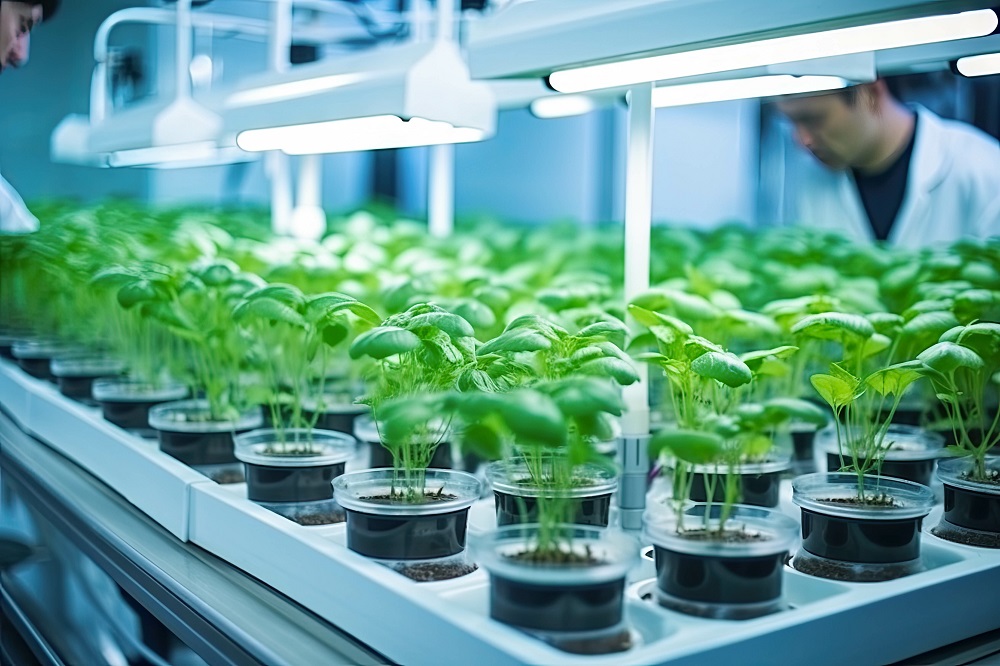In agriculture, innovation historically drives advancements to optimize yield, quality, and sustainability. Grow rooms, initially associated with cannabis cultivation, have evolved into controlled environments with widespread applications across agriculture. They offer precise control over environmental factors, leading to enhanced crop production, resource efficiency, and potential for urban farming. Their impact extends beyond traditional practices, symbolizing a shift towards technology-driven, sustainable food production.
What Are Grow Rooms?
Grow rooms are basically indoor spaces that are carefully set up to give plants exactly what they need to thrive. They use all sorts of cool gadgets like special lights, systems for growing plants without soil, controls to keep the temperature and humidity just right, and smart systems to manage plant food. The main aim of these grow rooms is to keep plants growing strong all year, no matter what the weather’s like outside.
Types of Grow Rooms
Grow rooms come in various types, each tailored to different needs and constraints. Here are some common types, including portable grow rooms:
1. Traditional Indoor Grow Rooms
These are typically constructed within a building or a room. Equipped with environmental control systems such as ventilation, lighting, and humidity control. Can be set up in basements, spare rooms, or specially designed grow spaces.
2. Portable Grow Rooms
These are compact, self-contained units designed for easy transport and setup. Often equipped with built-in lighting, ventilation, and hydroponic systems. A portable grow room can be used for temporary or short-term cultivation needs, or in situations where mobility is necessary.
3. Greenhouses
Greenhouses utilize natural sunlight while providing a controlled environment. They vary in size and complexity, ranging from small hobbyist structures to large commercial operations. Often constructed with transparent walls and roofs made of glass or plastic.
4. Hydroponic Grow Rooms
Utilize hydroponic systems where plants grow in a nutrient-rich water solution instead of soil. Often equipped with recirculating systems to conserve water and nutrients. Can be set up indoors or in greenhouses.
5. Vertical Grow Rooms
Utilize vertical space to maximize the number of plants grown in a limited area. Plants are typically grown in stacked trays or shelves under artificial lighting. Suitable for indoor environments where floor space is limited.
6. Container Grow Rooms
Converted shipping containers or purpose-built containers equipped with grow lights, ventilation, and other necessary systems. Highly portable and can be placed indoors or outdoors. Suitable for urban farming or remote locations.
7. Grow Tents
Portable, lightweight structures made of fabric or plastic-lined material. Equipped with reflective interiors, ventilation ports, and places to hang grow lights. Offer a flexible and affordable option for indoor growers.
8. Cold Frames
Simple structures with transparent roofs used to protect plants from cold weather while allowing sunlight in. Typically used for extending the growing season in cooler climates. Can be temporary or permanent structures.
9. Aquaponic Grow Rooms
Combine hydroponic systems with aquaculture (fish farming). Fish waste provides nutrients for plants, and plants help filter and purify the water for fish. Suitable for indoor environments and often used for sustainable food production.

Current Innovations in Grow Room Technology
Advancements in grow room technology have transformed indoor farming. The LED lights mimic natural sunlight, aiding plant growth without requiring additional cooling. Hydroponic and aeroponic systems eliminate the need for soil, delivering nutrients directly to plant roots and conserving water. Automation monitors plant growth, while data analytics refine cultivation methods for improved results.
These innovations are revolutionizing indoor farming, enhancing its sustainability, productivity, and resilience. They enable growers to overcome traditional constraints related to climate and space by providing more efficient and controlled growing environments. Moreover, by optimizing resource usage and minimizing waste through precise monitoring and data-driven decision-making, modern grow room technology holds promise for meeting the increasing demand for fresh produce in urban areas while reducing the environmental impact of agricultural practices.
Future Trends in Grow Room Technology
Agriculture is one of the industries disrupted by technology. Looking into the future, several emerging trends are set to reshape the landscape of grow rooms and indoor agriculture.
1. Vertical Farming
Vertical farming is a bit like arranging plant beds or shelves in layers to save space. Doing this boosts how much food we can grow in a small area and cuts down on how much land we need and how far we must transport things. Plus, with better technology for vertical farming systems and lighting, we’re seeing some exciting possibilities for growing food sustainably, especially in busy cities where space is tight.
2. AI and Machine Learning
AI and machine learning are increasingly integrated into grow room management systems to analyze data from sensors and cameras. This enables predictions of plant growth, anomaly detection, and automatic optimization of growing conditions. By leveraging AI, growers achieve higher yields, reduce resource consumption, and minimize operational costs.
3. Controlled Environment Agriculture (CEA)
Controlled Environment Agriculture (CEA) utilizes indoor farming methods such as grow rooms, greenhouses, and vertical farms to regulate factors like temperature and light, promoting plant growth. By integrating CEA with renewable energy sources like solar and wind power, reliance on fossil fuels is reduced, enhancing sustainability. CEA enables year-round production for a consistent food supply, merging efficient farming with environmental stewardship to address food security and climate change.
4. Sustainable Practices
As sustainability becomes increasingly important in agriculture, grow rooms are poised to adopt more eco-friendly practices. This includes utilizing recycled materials for construction, implementing closed-loop water and nutrient recycling systems, and minimizing energy consumption through efficient lighting and climate control technologies. By prioritizing sustainability, growers can reduce their environmental impact while meeting the growing demand for responsibly sourced produce.
5. Integration of Biotechnology
Advancements in biotechnology, such as gene editing and plant tissue culture, are expected to revolutionize crop breeding and cultivation in grow rooms. By genetically engineering plants for enhanced nutrient uptake, pest resistance, and stress tolerance, growers can produce higher yields with fewer inputs. Furthermore, plant tissue culture techniques enable the mass propagation of elite plant varieties in sterile laboratory conditions, ensuring uniformity and consistency in crop production.
Conclusion
Grow rooms offer a versatile and sustainable solution to agricultural challenges amid urbanization, climate change, and resource scarcity. They integrate innovative technologies with environmentally conscious practices for efficient food production. By enabling year-round cultivation and reducing reliance on external factors like weather and land availability, grow rooms ensure food security and sustainability. Their evolution continues to drive agricultural innovation, vital for addressing global food challenges. Embracing grow rooms and advancing agricultural science promise a future where food security and environmental stewardship intersect, ensuring a brighter and more sustainable tomorrow.






